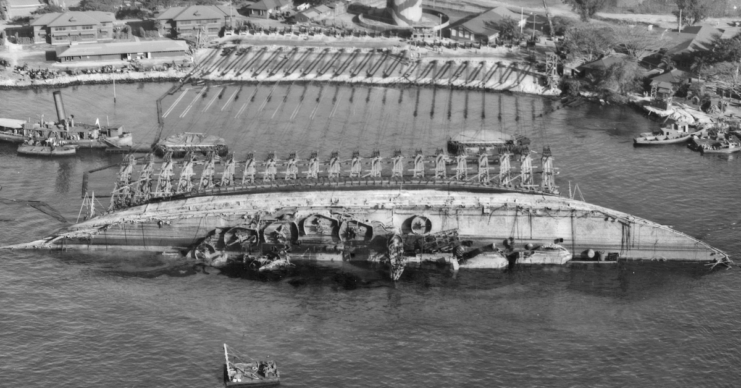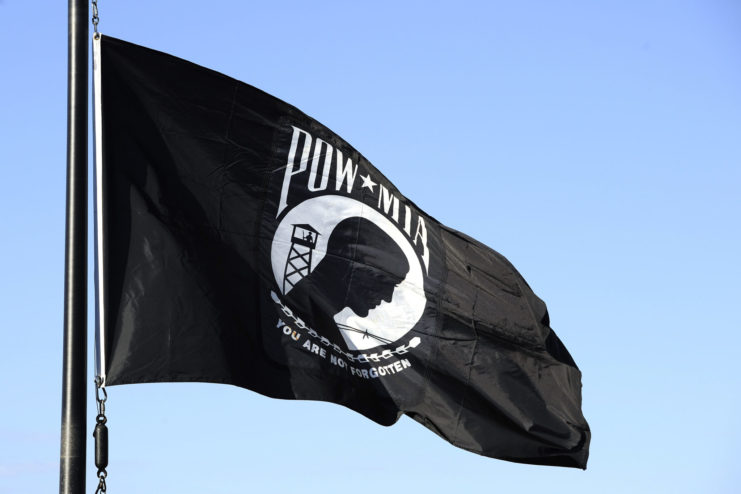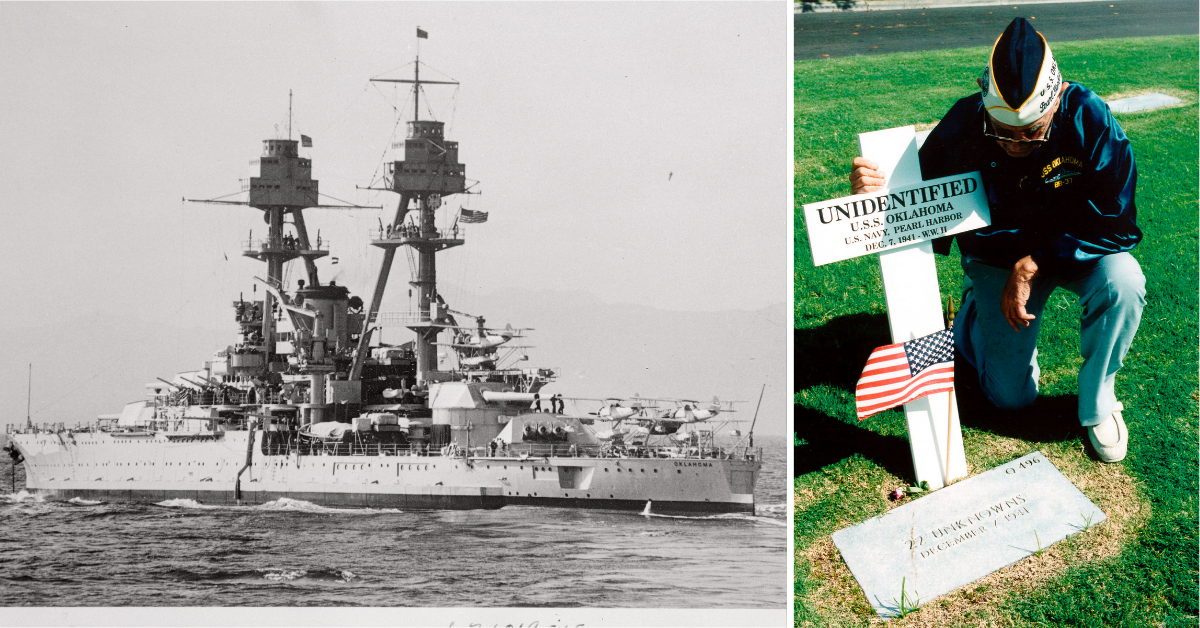A U.S. Navy serviceman who died on the USS Oklahoma during the Pearl Harbor attack has been successfully identified. Navy Fireman 1st Class Harold E. Bates has been identified using a combination of DNA, dental analysis, and anthropological analysis. His remains were exhumed as part of a multiple-years-long effort to identify bodies from Hawaiian cemeteries who were placed there after the events of Pearl Harbor.
The sinking of the USS Oklahoma
Bates was aboard the USS Oklahoma when the Japanese attacked the major naval base in 1941, an event that brought the USA into the war. Just 27 at the time, Bates was among 429 men who died on the Oklahoma when it sank.
The Nevada-class battleship was commissioned in 1916 and partook in protecting Allied ships crossing the Atlantic during WWI. In 1941, she was moored up in Pearl Harbor when she was struck by multiple torpedoes from Japanese aircraft, penetrating her hull and causing her to capsize in the harbor. She rotated until her mast touched the bottom of the harbor and her keel was exposed.
The death toll of this event was high, but many men managed to swim from the burning ship and even man guns aboard nearby warships to help fight back against the attack. Frighteningly, a large number of men were trapped alive inside the overturned ship, only being freed when rescuers cut open the hull.

She was far too damaged to be repaired, but she was an environmental and physical problem in the harbor, so plans were created to right the ship in order to be scrapped. Twenty-one winches mounted on the shore pulled her upright. Repairs were then made to make her able to float again. She was then gutted of most fittings before being sent for scrapping in San Francisco.
On the way, bad luck would strike again when a storm would cause her hull to sink en route, almost pulling one of her tugs down with her. To this day, the location of the Oklahoma is unknown.
Bates had been in the Navy for just three years before his death. He and his many unidentified comrades were buried in cemeteries in Hawaii. In 1947, many of these graves were dug up by the American Graves Registration Service, who were able to identify 35 men from the USS Oklahoma. The rest of the unidentified bodies were then buried in a mass grave at the National Memorial Cemetery of the Pacific in Honolulu, Hawaii.
Attempts to identify victims’ remains are ongoing
The Department of Defense announced that in 2015, 388 bodies would again be exhumed and sent to a laboratory for identification, if possible. The DoD has collected DNA from 84 percent of family members of USS Oklahoma victims and managed to obtain 90 percent of the medical records for the crew that died aboard the vessel.

While many of the bodies were badly destroyed, and many remains were placed together in caskets, the work has been less daunting than normal thanks to the vast collection of known families’ DNA and detailed records of the men on the ship.
Using this information and the latest scientific methods, the bodies have been progressively analyzed. Many families have lobbied for the men of the Oklahoma to be identified for decades, while others have held out hope that their long-lost family members may still be alive out there somewhere.
More from us: Dangerous ‘Dragon’s Teeth’ Sea Defenses To Be Removed From British Beach
Bob Valley, 82, of Escanaba, Michigan, said that his family received a telegraph soon after the sinking of the USS Oklahoma that said his 19-year-old brother, Lowell, had been killed that day. “And that’s all they ever got. They didn’t want to give up, and would think he would pop up someplace,” he says. With the chance that his brother may be alive, Bob began making plans. “I’ve got a cemetery plot…and we’ve got a marker there,” he said. “That’s where he would go.”
